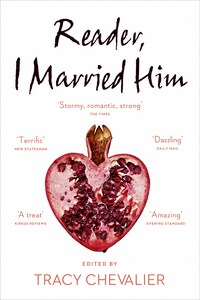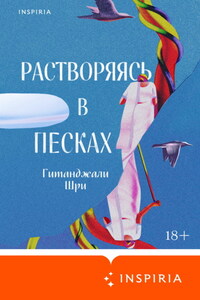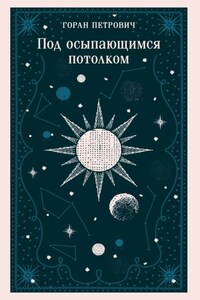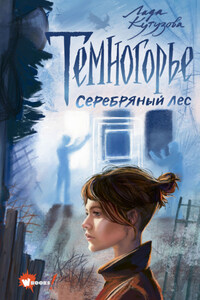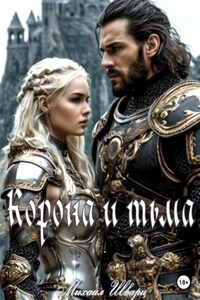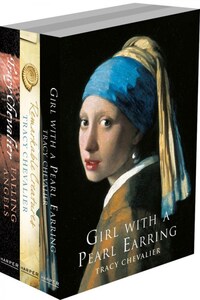The Borough Press
An imprint of HarperCollinsPublishers
1 London Bridge Street
London SE1 9GF
www.harpercollins.co.uk
First published in Great Britain by HarperCollinsPublishers 2016
In the compilation and introductory material © Tracy Chevalier 2016
My Mother’s Wedding © Tessa Hadley 2016
Luxury Hour © Sarah Hall 2016
Grace Poole Her Testimony © Helen Dunmore 2016
Dangerous Dog © Kirsty Gunn 2016
To Hold © Joanna Briscoe 2016
It’s a Man’s Life, Ladies © Jane Gardam 2016
Since First I Saw Your Face © Emma Donoghue 2016
Reader, I Married Him © Susan Hill 2016
The Mirror © Francine Prose 2016
A Migrating Bird © Elif Șafak 2016
Behind the Mountain © Evie Wyld 2016
The China from Buenos Aires © Patricia Park 2016
Reader, She Married Me © Salley Vickers 2016
Dorset Gap © Tracy Chevalier 2016
Party Girl © Nadifa Mohamed 2016
Transference © Esther Freud 2016
The Mash-Up © Linda Grant 2016
The Self-Seeding Sycamore © Lionel Shriver 2016
The Orphan Exchange © Audrey Niffenegger 2016
Double Men © Namwali Serpell 2016
Robinson Crusoe at the Waterpark © Elizabeth McCracken 2016
The moral rights of the authors have been asserted
Cover design by Heike Schüssler © HarperCollinsPublishers Ltd 2017
Cover photograph © Dan Saelinger/Trunk Archive
A catalogue record for this book is available from the British Library
This novel is entirely a work of fiction. The names, characters and incidents portrayed in it, while at times based on historical figures, are the work of the author’s imagination. Any resemblance to actual persons, living or dead, events or localities is entirely coincidental.
All rights reserved under International and Pan-American Copyright Conventions. By payment of the required fees, you have been granted the non-exclusive, non-transferable right to access and read the text of this e-book on-screen. No part of this text may be reproduced, transmitted, down-loaded, decompiled, reverse engineered, or stored in or introduced into any information storage and retrieval system, in any form or by any means, whether electronic or mechanical, now known or hereinafter invented, without the express written permission of HarperCollins e-books
Source ISBN: 9780008150600
Ebook Edition © November 2016 ISBN: 9780008150594
Version: 2016-12-14
Why is “Reader, I married him” one of the most famous lines in literature? Why do we remember it and quote it so much? Why have twenty-one writers jumped at the opportunity to take that line and run with it, folding its powerful resonance and sheer chutzpah into their own stories? Is it because of who says it and how she says it, or who has written it, or how we read it – or all of those things?
Charlotte Brontë’s Jane Eyre, the story of a nineteenth-century orphan who becomes a governess and finds her place in the world, is most memorable for the character of Jane herself. “Poor, obscure, plain, and little”, with no family and no prospects, nothing to cushion her from a life of poverty and loneliness except her wits and her self-belief, Jane is the embodiment of the underdog who ultimately triumphs. And who doesn’t support the underdog? No matter what our circumstances, most of us see ourselves as underdogs; we can relate to her, and cheer her on.
Despite a childhood of physical abuse (near-starvation at her boarding school) and psychological torment (locked in the “red room” by her cruel aunt), Jane grows up with her self-esteem intact, and throughout the novel proves to be tough, resilient and morally grounded. She catches the eye of her employer, Mr Rochester, a man assumed to be way out of her league. She is as witty and as clever as he, eventually winning his love when she isn’t even trying to. She stands up to him too, declaring, in probably the second most quoted line from the book: “I am no bird; and no net ensnares me; I am a free human being with an independent will.” Who can resist a character like Jane Eyre?
“Reader, I married him” is Jane’s defiant conclusion to her rollercoaster story. It is not, “Reader, he married me” – as you would expect in a Victorian society where women were supposed to be passive; or even, “Reader, we married.” Instead Jane asserts herself; she is the driving force of her narrative, and it is she who chooses to be with Rochester. (Interestingly, Jane also inherits a fortune from an absent uncle, but no one ever remembers that detail; it is a
